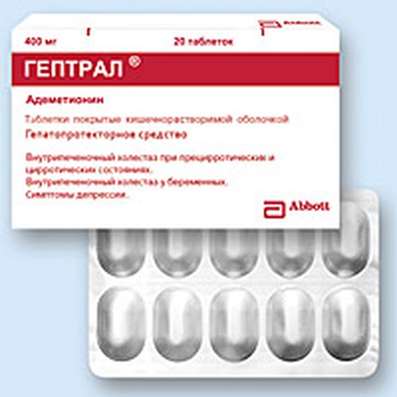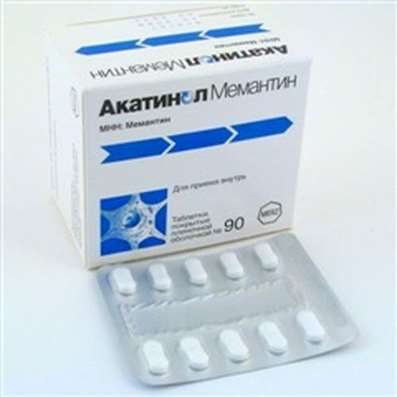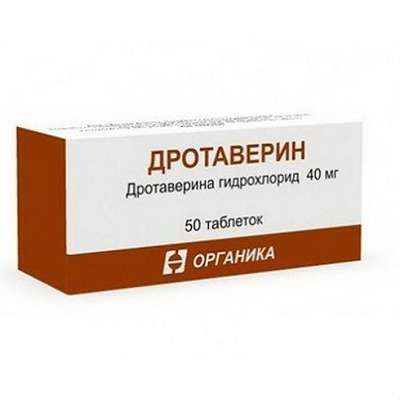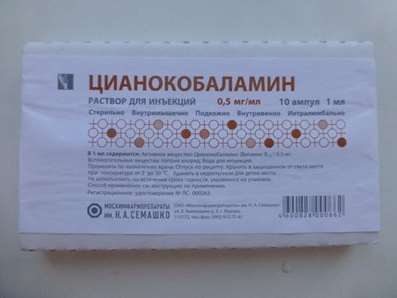Instruction for use: Atenolol
I want this, give me price
Trade name of the drug – Atenolol, Atenolol Nycomed, Atenol, Atenolol Belupo, Tenormin, atenolol tablets, Atenolol-Acre, Betakard, Atenolol-ratiopharm, Atenobene, Teva-Atenolol, Atenolan, Atenova, Atenolol-ICCO, Atenolol STADA, Prinorm, Ormidol, Velorin 100, Atenolol-Adzhio, Vero Atenolol, Sinara, Atenolol-FPO, Atenosan, Atenolol-UBF
The Latin name of the substance Atenolol
Atenololum (genus. Atenololi)
Chemical rational name: 4- [2-Hydroxy-3 - [(1-methylethyl) amino] propoxy] benzeneacetamide (as the monohydrochloride)
Gross formula C14H22N2O3
Pharmacotherapeutic group: Beta-blockers
The nosological classification (ICD-10)
E05.9 Thyrotoxicosis, unspecified: tireotoksicski reaction; Enlargement of the thyroid gland with symptoms of hyperthyroidism; The phenomenon of iodine Basedow; Thyroid hyperplasia; hyperthyroid state; Hyperthyroidism; Thyroid dysfunction; Diffuse thyrotoxic goiter; The latent thyrotoxicosis; Increased thyroid function; thyrotoxicosis
G25.0 Essential tremor: shake; Generalized muscle tremors; Essential tremor family; essential tremor; Tremor idiopathic; Tremor idiopathic benign; Tremor hereditary; Essential tremor is benign
G43 Migraine: The pain of migraine; Migraine; hemiplegic migraine; Migraine headache; A migraine attack; Continuous headache; hemicrania
I10 Essential (primary) hypertension: hypertension; Arterial hypertension; Arterial hypertension crisis course; Essential Hypertension; Essential hypertension; Essential hypertension; Essential hypertension; Essential hypertension; Primary hypertension; Arterial hypertension, complications of diabetes; The sudden increase in blood pressure; Hypertensive disorders of blood circulation; hypertensive condition; hypertensive crises; arterial Hypertension; malignant Hypertension; Hypertonic disease; hypertensive crises; accelerated hypertension; malignant hypertension; The aggravation of hypertensive disease; Transient hypertension; Isolated systolic hypertension
I15 Secondary hypertension: Arterial hypertension, complications of diabetes; hypertension; The sudden increase in blood pressure; Hypertensive disorders of blood circulation; hypertensive condition; hypertensive crises; hypertension; arterial Hypertension; malignant Hypertension; hypertensive crises; accelerated hypertension; malignant hypertension; The aggravation of hypertensive disease; Transient hypertension; hypertension; Arterial hypertension; Arterial hypertension crisis course; renovascular hypertension; Hypertension symptomatic; Renal hypertension; Renovascular hypertension; renovascular hypertension; Symptomatic hypertension
I20 Angina [angina]: Heberden disease; Angina pectoris; The attack of angina pectoris; recurrent angina; Spontaneous angina; Stable angina pectoris; Angina rest; Angina progressing; Angina mixed; Angina spontaneous; stable angina; Chronic stable angina; Angina Syndrome X
I20.0 Unstable angina: heberden disease; Angina pectoris; The attack of angina pectoris; recurrent angina; Spontaneous angina; Stable angina pectoris; Angina rest; Angina progressing; Angina mixed; Angina spontaneous; stable angina; Chronic stable angina; Angina Syndrome X
I21 Acute myocardial infarction: Myocardial infarction in the acute phase; Acute Myocardial Infarction; Myocardial infarction with pathologic Q wave and without; Myocardial infarction complicated by cardiogenic shock; Infarction left ventricular; Transmural myocardial infarction; Myocardial infarction netransmuralny (subendocardial); Netransmuralny myocardial infarction; Subendocardial myocardial infarction; The acute phase of myocardial infarction; Acute myocardial infarction;Sub-acute phase of myocardial infarction; Subacute phase of myocardial infarction; Thrombosis of the coronary arteries (the arteries); Threatened myocardial infarction; Myocardial infarction without Q wave
I25 Chronic ischemic heart disease: Coronary heart disease on the background of hypercholesterolemia; Coronary heart disease is a chronic; Coronary heart disease; Stable coronary artery disease; Percutaneous transluminal angioplasty; Myocardial ischemia, arteriosclerosis; Recurrent myocardial ischemia
I25.2 Transferred last myocardial infarction: Cardiac syndrome; Myocardial infarction; post-MI; Rehabilitation after myocardial infarction; Reocclusion of the operated vessel; Angina postinfarctnaya; Status after myocardial infarction; Status after myocardial infarction; myocardial infarction
I27 Other forms of cardiopulmonary diseases: Chronic pulmonary heart disease; Hypertension pulmonary circulation; Pulmonary hypertension; Pulmonary heart disease; pulmonary heart disease; Cardio-pulmonary insufficiency; Secondary pulmonary hypertension; Chronic pulmonary heart; Eisenmenger syndrome
I34.1 prolapse [prolapse] mitral valve: Rupture of papillary muscle; Barlow syndrome; Mitral valve prolapse syndrome; Mitral valve prolapse
I42 Cardiomyopathy: cardiopathy; diffuse cardiomyopathy; Diffuse neobliteriruyuschaya cardiomyopathy; myocardial Gipokaliygistidii; myocardiodystrophy; Acute cardiomyopathy; Chronic cardiomyopathy
I47.1 Supraventricular tachycardia: Supraventricular paroxysmal tachycardia; supraventricular tachyarrhythmia; supraventricular tachycardia; Supraventricular arrhythmias; Supraventricular paroxysmal tachycardia; supraventricular tachyarrhythmias; supraventricular tachycardia; Neurogenic sinus tachycardia; orthodromic tachycardia; Paroxysmal supraventricular tachycardia; Paroxysm of supraventricular tachycardia; Paroxysm of supraventricular tachycardia with WPW-syndrome; Paroxysm of atrial tachycardia; Paroxysmal supraventricular tachyarrhythmia; Paroxysmal supraventricular tachycardia; Politopnye atrial tachycardia; Atrial fibrillation; Atrial tachycardia is true; Atrial tachycardia; Atrial tachycardia with AV block; reperfusion arrhythmias; Reflex Bertsolda-Jarisch; Recurrent sustained supraventricular paroxysmal tachycardia; Symptomatic ventricular tachycardia; Sinus tachycardia; Supraventricular paroxysmal tachycardia; supraventricular tachyarrhythmia; supraventricular tachycardia; supraventricular arrhythmia; supraventricular arrhythmias; Tachycardia of AV connections; supraventricular tachycardia; Tachycardia orthodromic; sinus tachycardia; The nodal tachycardia; Chaotic atrial tachycardia politopnye; Wolff-Parkinson-White
I47.2 Ventricular tachycardia: Torsades de pointes (torsade de pointes); Symptomatic ventricular tachycardia; Torsades de pointes in myocardial infarction; Ventricular fibrillation; Ventricular tachycardia; Ventricular tachyarrhythmias; Ventricular tachycardia; ventricular Tachycardia; Life-threatening ventricular arrhythmias; Sustained ventricular tachycardia; Sustained monomorphic ventricular tachycardia; Paroxysmal ventricular tachycardia torsades; Paroxysmal ventricular tachycardia
I48 Atrial fibrillation and flutter: Permanent atrial tachyarrhythmias; Relief frequent ventricular rate during atrial flutter or blink; atrial fibrillation; Paroxysm of atrial fibrillation and flutter; Paroxysm of atrial fibrillation; Paroxysmal atrial fibrillation; Atrial premature beats; Tahiaritmicheskoy atrial fibrillation; Tahisistolicheskoy atrial fibrillation; auricular flutter; Life-threatening ventricular fibrillation; Atrial fibrillation; Chronic atrial fibrillation; supraventricular arrhythmia; Paroxysmal atrial fibrillation and flutter; Paroxysmal fibrilloflutter; Atrial premature beats
I49.4 Other and unspecified premature depolarization: extrasystole arrhythmia; extrasystole; extrasystole unspecified
I49.9 Irregular heartbeat, unspecified: Paroxysmal supraventricular tachycardia; extrasystole arrhythmia; Atrial fibrillation tachysystolic; supraventricular tachyarrhythmia; supraventricular arrhythmias; AV reciprocating tachycardia; AV-nodal reciprocating tachycardia; ventricular fibrillation; Irregular heartbeat; Antidromic reciprocating tachycardia; Cardiac arrhythmias; Arrhythmias; Arrhythmia; Heart arythmy; Arrhythmia due to hypokalemia; ventricular tachyarrhythmias; The high frequency of ventricular contraction; Cardiac arrhythmias; Paroxysmal supraventricular arrhythmia; Paroxysmal supraventricular arrhythmia; Paroxysmal dysrhythmia; Paroxysmal atrial-ventricular rhythm; cardiac arrhythmias; supraventricular tachycardia; tachyarrhythmia; Precordial abnormal pulsation
R07.2 Pain in the heart: neuroses of the heart; Myocardial ischemic pain; Pain syndrome in myocardial infarction; cardialgia; cardioneurosis; Cardiac syndrome; Pain in cardiac patients; Cardialgia on background dyshormonal myocardial dystrophy; Functional cardialgia; Psevdostenokardiya; pericardial pain
CAS code 29122-68-7
Description of Atenolol
Crystalline powder. Soluble in water (26.5 mg / ml - at 37 ° C), good - 1 M hydrochloric acid solution (300 mg / ml - at 25 ° C) and poorly - in chloroform (3 mg / ml - temperature 25 ° C).
Pharmacological Properties of Atenolol
Pharmachologic effect - antianginal, hypotensive, anti-arrhythmic.
Selectively blocking beta1-adrenergic receptors, has no membrane stabilizing and intrinsic sympathomimetic activity. Stops central sympathetic impulses, reduces the sensitivity of peripheral tissues to catecholamines, inhibits renin secretion. It slows heart rate at rest and during exercise. The negative chronotropic effect is manifested within 1 h, reaching a maximum after 2-4 hours, lasts up to 24 hours. Reduces cardiac output and Sad Dad, it reduces orthostatic tachycardia. The antihypertensive effect lasts for 24 hours, stabilize with regular admission at the end of 2 weeks. It reduces myocardial oxygen demand, but by increasing the tension of the muscle fibers and ventricular end-diastolic pressure in the left ventricle may increase the oxygen inquiry, especially in patients with chronic heart failure. Suppresses sinus node automaticity, prolongs the refractory period, slowing down on the AV node. Increases the survival of patients with myocardial infarction (reduces the frequency of ventricular arrhythmias and angina attacks). Slightly reduces the vital lung function, virtually no weakening bronchodilatory effect of isoproterenol.
Once inside it absorbed about 50% of the elderly - a few more. Cmax achieved within 2-4 hours, plasma protein binding - 6-16%. Poor permeates through GEB, crosses the placental barrier and into breast milk. Practically not metabolized by the liver and excreted by the kidneys by glomerular filtration (85%). T1 / 2 - 6-7 hours, increases in elderly patients. Impaired renal function accompanied by longer T1 / 2 and cumulation: the ability to cumulation shown at Cl creatinine less than 35 mL / min / 1.73 m2 (need to decrease doses).
Prolonged use is accompanied epithelium vacuolation duodenum in dogs (15 mg / kg / day) and the development of degenerative processes in myocardium Male rats (300 mg / kg / day). In experiments on rats (18 months) and mice (24 months) at a dose of 300 mg / kg / day has no carcinogenic action. At doses of 500 and 1500 mg / kg / day (rat) increases the incidence of benign tumors of the adrenal medulla, anterior pituitary adenoma, breast fibroadenomas (females), parafollicular cell carcinoma of the thyroid (males). Conducting a cytogenetic test (in vivo), and Ames test showed no mutagenic properties. The male and female rats doses 100 times higher than MRDCH, an adverse effect on fertility has not been provided. At a dose of 50 mg / kg / day increases the incidence resorption embryo / fetal rats.
Indications for Atenolol
Hypertension, angina pectoris, acute myocardial infarction (with stable hemodynamics), tachycardia, sinus, atrial, ventricular, and paroxysmal etc., extrasystole, flutter and atrial fibrillation, cardiac hyperkinetic syndrome, mitral valve prolapse, cardiopsychoneurosis on hypertonic type;. Combination Therapy of hypertrophic cardiomyopathy, pheochromocytoma, thyrotoxicosis, essential tremor; migraine (prevention).
Contraindications for Atenolol
Hypersensitivity, sinus bradycardia (heart rate less than 50 bpm. / Min), sinoatrial blockade, sick sinus syndrome, AV block II-III degree, hypotension (Sad less than 90 mm Hg. Art.), Acute or chronic heart failure in the stage of decompensation , cardiogenic shock, the peripheral blood circulation, pregnancy, breast-feeding.
Restrictions to application
Diabetes, hypoglycemia, chronic obstructive pulmonary disease (emphysema, asthma), liver dysfunction and / or kidney disease, myasthenia gravis, depression, psoriasis, pheochromocytoma, metabolic acidosis, children (efficacy and safety are not defined) and old age.
Pregnancy and breast-feeding
Category effects on the fetus by FDA - D.
At the time of treatment should stop breastfeeding.
Side effect of Atenolol
From the nervous system and sensory organs: fatigue, weakness, dizziness, headache, drowsiness or insomnia, nightmares, depression, anxiety, confusion, or momentary loss of memory, hallucinations, weakening of reactivity, paresthesia, convulsions; visual disturbances, reduced secretion of saliva and tear fluid, conjunctivitis.
Cardio-vascular system and blood (blood, hemostasis): bradycardia, heart rate, conduction disturbances infarction, AV block, arrhythmia, weakening of myocardial contractility, heart failure, hypotension, syncope, Raynaud's phenomenon, vasculitis, chest pain, thrombocytopenia, agranulocytosis .
From the digestive tract: dry mouth, nausea, vomiting, abdominal pain, diarrhea, constipation, liver function abnormalities.
From the respiratory system: dyspnea, laryngo and bronchospasm.
Allergic reactions: itching, rash, erythema, urticaria, psoriasiform and dystrophic skin changes.
Other: reversible alopecia, rash, cold extremities, myasthenia gravis, weakening of libido, impotence, Peyronie's disease, changes in the activity of enzymes, bilirubin, withdrawal symptoms, hypothyroid condition, hypoglycemia.
Interaction
Antiarrhythmic and anesthetic agents increase cardiodepressive effects (increased risk of bradycardia, arrhythmia, hypotension, heart failure). Reserpine, methyldopa, clonidine, guanfacine, potentiate cardiac glycosides negative chrono-, Drome and bathmotropic, insulin and other antidiabetic agents - hypoglycemia. NSAIDs, estrogens, sympathomimetics, xanthines weaken hypotensive effect, absorption, increase - sympatholytic, nitroglycerin, hydralazine and other antihypertensive drugs, antacids - slow absorption. Cimetidine inhibits metabolism. Antidepolyarizuyuschih prolongs the effect of muscle relaxants, coumarin anticoagulant effect. Three / tetracyclic antidepressants, antipsychotics, sedatives, hypnotics, and alcohol potentiate CNS depression. Incompatible with MAO inhibitors.
Overdose
Symptoms: bradycardia, AV block II-III degree, heart failure, respiratory failure, hypotension, bronchospasm, hypoglycaemia.
Treatment: gastric lavage and the appointment of absorbent; symptomatic therapy: atropine, isoprenaline, ortsiprenalin, cardiac glycosides or glucagon, diuretics, vasopressor agents (dopamine, dobutamine or norepinephrine), selective beta-agonists, glucose solution (w / w), the installation of an artificial pacemaker. Perhaps dialysis.
Routes of administration
Inside.
Precautions for substance Atenolol
Treatment is carried out under regular medical supervision. Before starting therapy should be compensated heart failure. During treatment requires monitoring of heart rate, blood pressure, blood glucose level (a correction dose of antidiabetic drugs) and control over the appearance of the symptoms of heart failure.
Be wary of during the drivers of vehicles and people skills relate to the high concentration of attention. At the time of treatment is recommended to exclude alcohol intake.
In patients with diabetes mellitus and hyperthyroidism may mask tachycardia caused by hypoglycemia or hyperthyroidism. When pheochromocytoma should simultaneously apply alpha adrenolytics. Perhaps the increased severity of hypersensitivity reactions and the lack of effect of conventional doses of epinephrine with aggravated allergic history.
In the case of elderly patients increasing bradycardia (less than 50 u. / Min), hypotension (Sad below 100 mm Hg), AV blockade bronchospasm, ventricular arrhythmias, heavy human liver and kidneys, it is necessary to reduce the dose or discontinue treatment. Discontinue therapy should be gradually reducing the dose of, for 10-14 days. Patients with coronary artery disease should be between discontinuation of the drug be monitored carefully. Atenolol should be canceled 48 hours prior to surgery using general anesthesia (chloroform or ether) or select an anesthetic with the least negative inotropic effect.

 Cart
Cart





